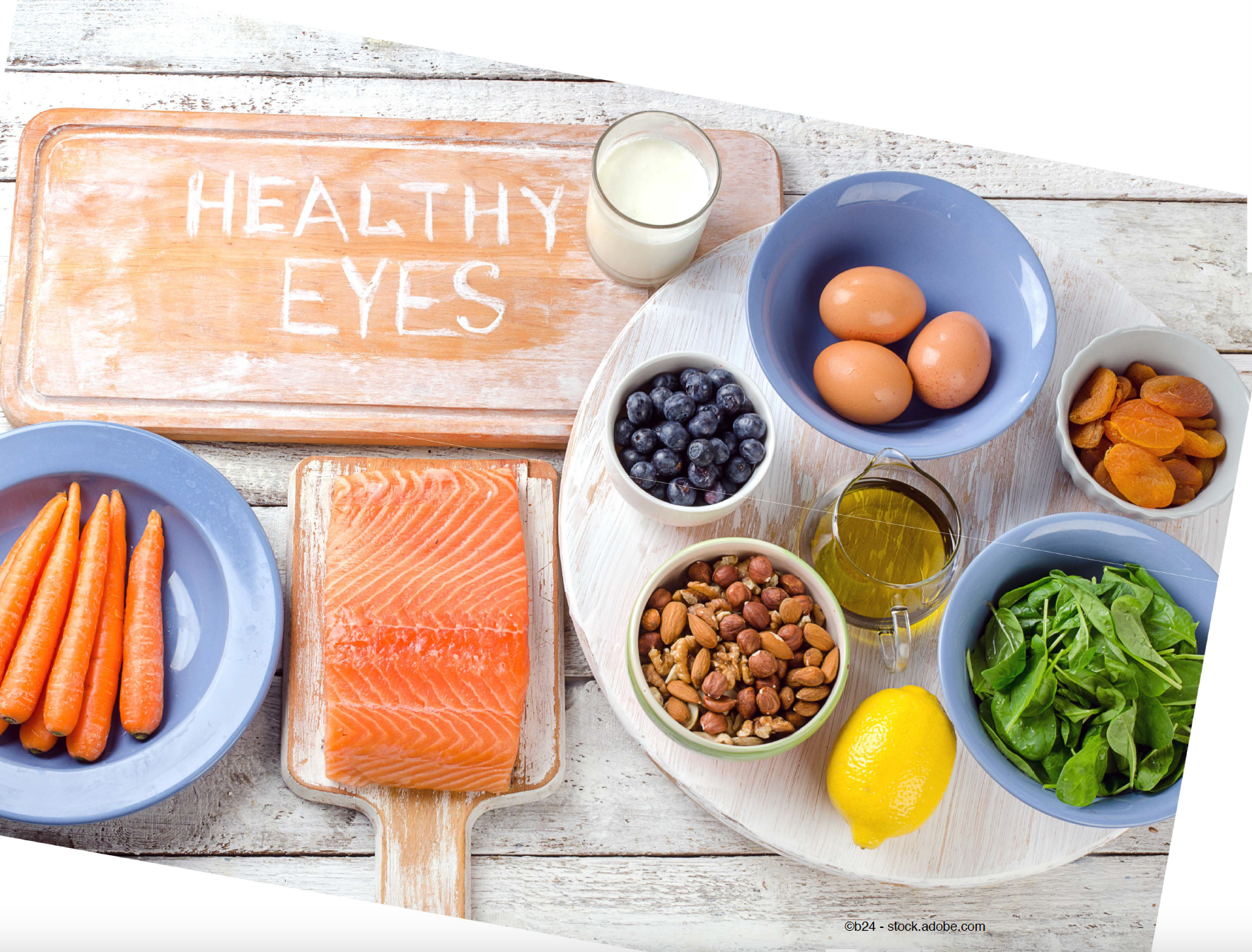Article
Glaucoma + nutrition: why what you eat matters
Author(s):
There’s no shortage of diet programs—Paleo, Mediterranean, intermittent fasting—all claiming to be the best option for a healthy life. Research has shown that poor lifestyle choices, including unhealthy diets, contribute to many diseases and that simply adhering to good nutrition can even prevent some health issues.

There’s no shortage of diet programs—Paleo, Mediterranean, intermittent fasting —all claiming to be the best option for a healthy life. Research has shown that poor lifestyle choices, including unhealthy diets, contribute to many diseases and that simply adhering to good nutrition can even prevent some health issues.
Scientists can trace the impact of diet on disease throughout history. For example, studies suggest that diabetes, once virtually unknown among the Maya of Central America, skyrocketed after switching to a Western diet high in sugars. Siberian nomads had almost no heart disease until after the fall of the Soviet Union, when many settled in towns and began eating market foods. Today about half the Yakut living in villages are overweight, and almost a third have hypertension.
While following a healthy diet isn’t a magic bullet and can’t prevent glaucoma, there are benefits to eating certain foods and avoiding others.
Food for Thought (and Consumption) for People Living with Glaucoma
Feast on Fruits and Veggies
Fruits and veggies are good sources of vitamins A, C, and the antioxidants lutein and zeaxanthin, compounds known to protect against oxidative stress associated with damage to the optic nerve and other tissues of the eye in glaucoma.
A study conducted with 584 Black women found that those who consumed three or more fruit or fruit juice servings per day were 79 percent less likely to have glaucoma than those who consumed less than one serving.
Load Up on Leafy Greens
Recommendations to eat leafy greens are well-known as a key for optimum health, but a diet that includes leafy greens may also provide additional benefits to patients with glaucoma. Research shows that people who eat more leafy green vegetables like kale and spinach may have a 20 to 30 percent lower risk of developing the disease. At the same time, the study doesn't prove that leafy greens reduce glaucoma risk; only an association between the two.
Eating leafy greens is also linked to lower rates of inflammation, cancer, heart disease, and even macular degeneration, so you’ve got nothing to lose and everything to gain!
Go Nuts
Nuts and seeds are excellent sources of vitamin E, which is vital because the vitamin helps keep cells healthy and protects them from free radical damage, which breaks down the protective retinal tissues in the eye. Sunflower seeds (which also help decrease the risk of age-related macular degeneration and cataracts), almonds, hazelnuts, and pistachios (these have high levels of lutein and zeaxanthin as well) are all great sources.
Get Fishy
Here’s the dish: Fish such as salmon, tuna, sardines, and halibut contain high levels of omega-3 fatty acids, which research suggests may help reduce the risk of developing eye disease later in life. Additionally, eating more omega-3s has been shown to decrease glaucoma-related pressure in the eye.
Indulge in Chocolate
Good news for chocolate lovers! A study published in JAMA Ophthalmology found that adults who ate a bar of dark chocolate could see better about two hours later, possibly due to enhanced blood flow caused by antioxidants called flavanols in the chocolate. Okay, it was a slight improvement, but still.
Welcome Tea Time
According to a study published in the British Journal of Ophthalmology, people who drank at least one cup of hot tea daily lowered their risk of developing glaucoma by 74 percent compared to those who did not consume the beverage. More research is needed to understand the links, but it looks like the British have been on to something!
Have a Banana
Bananas, avocados, pumpkin seeds, and black beans are great sources to help you meet the recommended daily allowance of 300-400 magnesium. Though more research is needed, preliminary studies suggest that dietary magnesium may benefit people with glaucoma by improving blood flow to the eye. It may also help protect retinal ganglion cells, which process visual information in the eye and transmit it to the brain via the optic nerve.
On the flip side are foods people living with glaucoma should avoid. Foods that contribute to metabolic syndrome, obesity, blood pressure abnormalities, and diabetes are risk factors for primary open-angle glaucoma (POAG). Therefore, a diet that helps maintain normal blood pressure and blood glucose concentrations helps reduce substantial risk for glaucoma.
Studies have also noted that an association may exist between obesity and elevated intraocular pressure (IOP) and ocular hypertension. There’s no evidence yet indicating that losing excess weight reduces the risk for glaucoma, although significant decreases in IOP have been reported in humans through weight loss.
Caloric intake is another factor for glaucoma patients. One study found that healthy caloric restriction can positively affect the eyes, making it more likely to trigger what the researchers refer to as “anti-aging mechanisms,” helping them limit ocular dysfunction.
Diets high in carbohydrates have also been correlated with a greater risk of glaucoma, while a lower intake of carbohydrates correlates with lesser risk.
Understanding how diet can impact the risk of glaucoma and following healthy dietary guidelines can play an essential role in the lives of people living with glaucoma.
Newsletter
Don’t miss out—get Ophthalmology Times updates on the latest clinical advancements and expert interviews, straight to your inbox.




